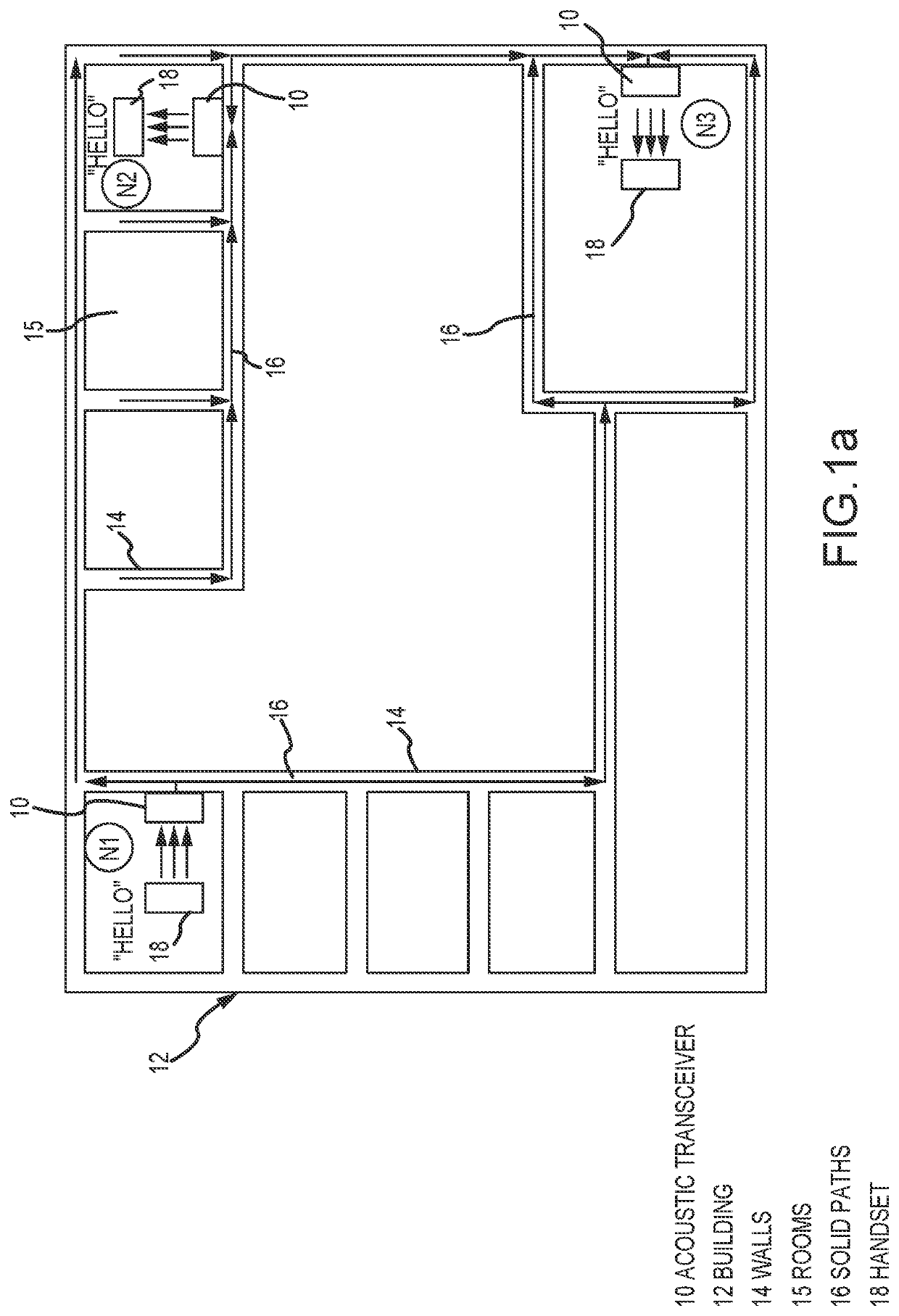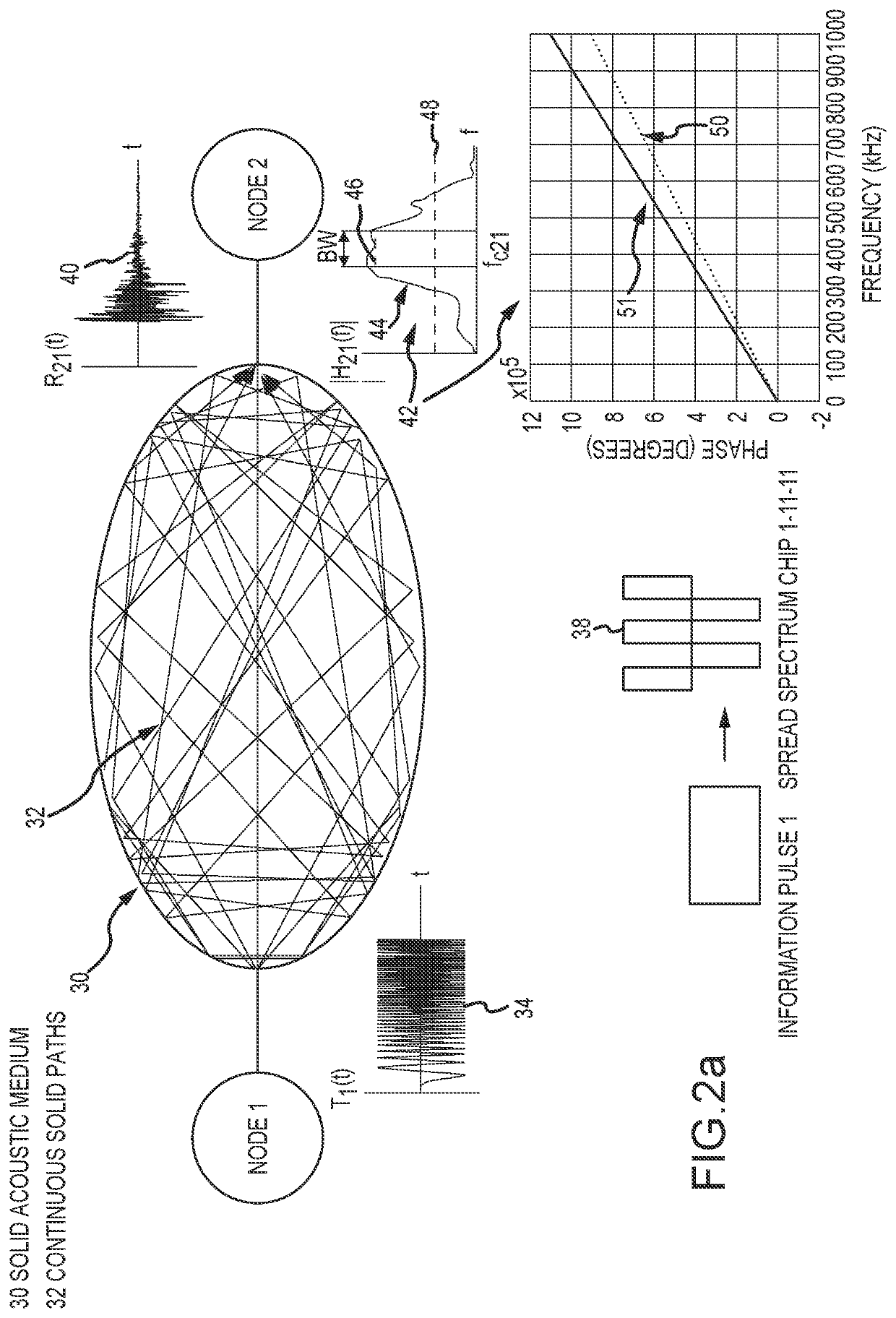Covert acoustic communications through solid propagation channels using spread spectrum coding and adaptive channel pre-distortion
a technology of spread spectrum coding and covert acoustic communication, applied in the field of covert acoustic communication through solid propagation channels, can solve the problems of physical impracticality of conventional communications schemes, denied or compromised, radio frequency (rf) communications may be denied or compromised,
- Summary
- Abstract
- Description
- Claims
- Application Information
AI Technical Summary
Benefits of technology
Problems solved by technology
Method used
Image
Examples
Embodiment Construction
[0024]Covert acoustic communications (CAC) over continuous solid paths that connect node pairs is achieved by encoding signals using spread spectrum coding techniques that position the encoded signal at a center frequency fc within a narrow frequency bandwidth BWNB in which the amplitude of the channel response H(f) between each node pair is relatively high. The channel response H(f), bandwidth BWNB and center frequency fc, and accordingly the signal data rate will adapt for each node pair and possibly each side of the node pair. A pre-distortion filter 1 / H(f) pre-distorts the encoded signal over bandwidth BWNB to compensate for material and modal dispersion and multipath between the node pair. This approach discards the ill behaved part of the channel response in each node pair and then constrains the spread spectrum codes to the narrow band well-behaved part of the channel response. This technique avoids the problems associated with frequency dependent attenuation of the continuou...
PUM
 Login to View More
Login to View More Abstract
Description
Claims
Application Information
 Login to View More
Login to View More - R&D
- Intellectual Property
- Life Sciences
- Materials
- Tech Scout
- Unparalleled Data Quality
- Higher Quality Content
- 60% Fewer Hallucinations
Browse by: Latest US Patents, China's latest patents, Technical Efficacy Thesaurus, Application Domain, Technology Topic, Popular Technical Reports.
© 2025 PatSnap. All rights reserved.Legal|Privacy policy|Modern Slavery Act Transparency Statement|Sitemap|About US| Contact US: help@patsnap.com



